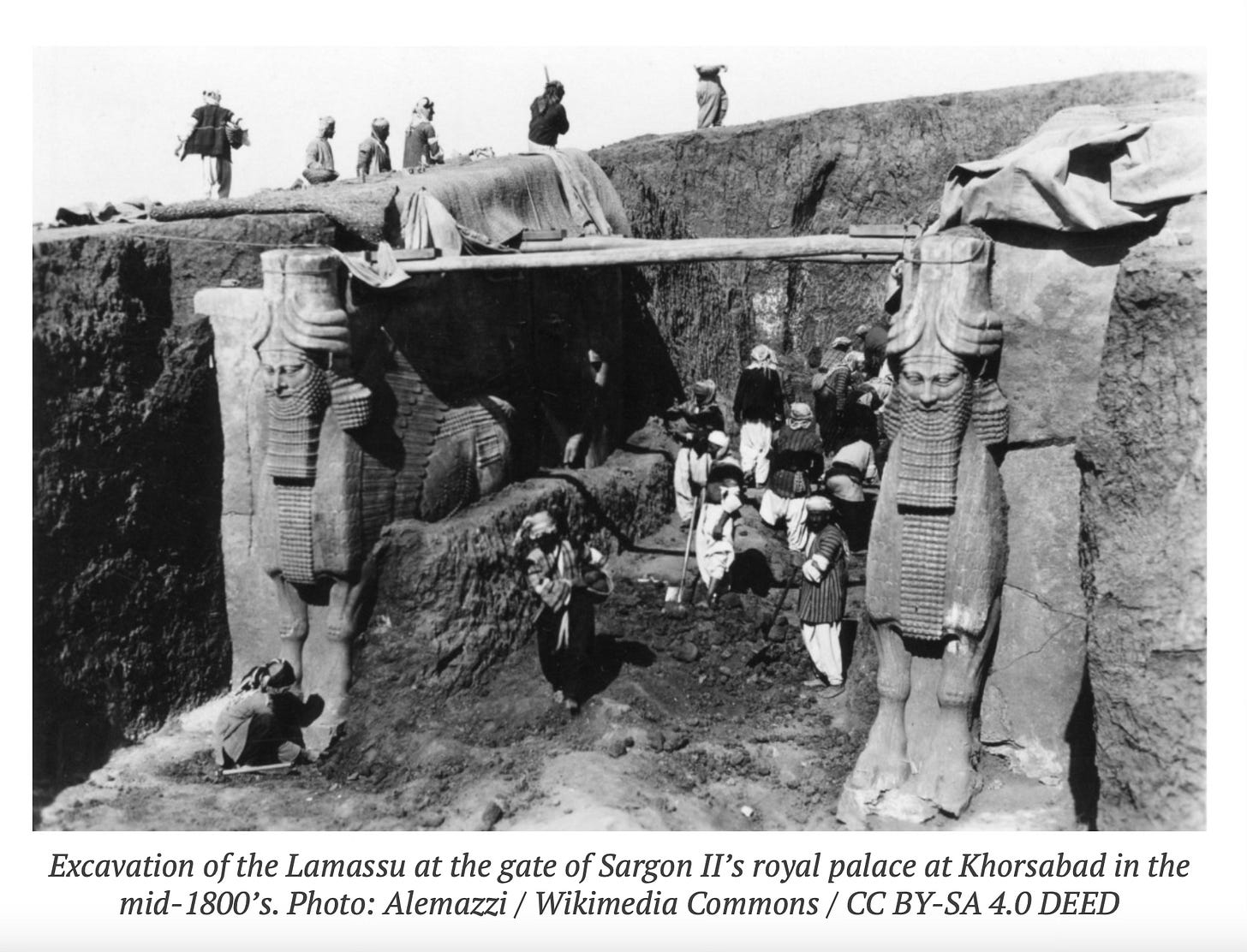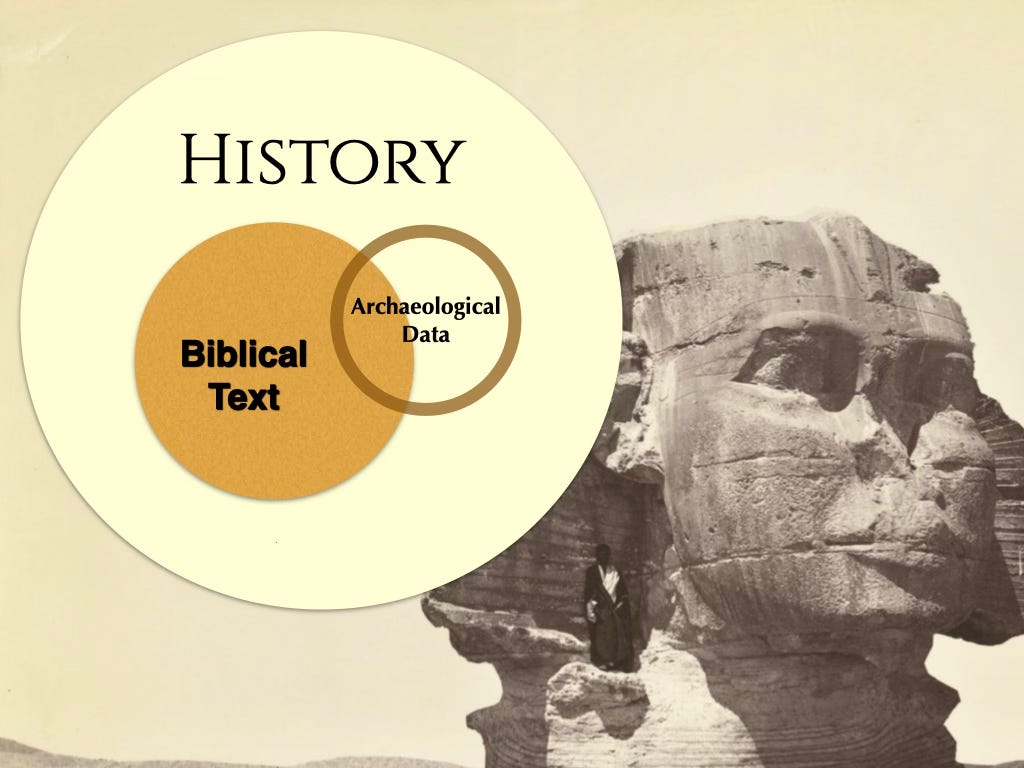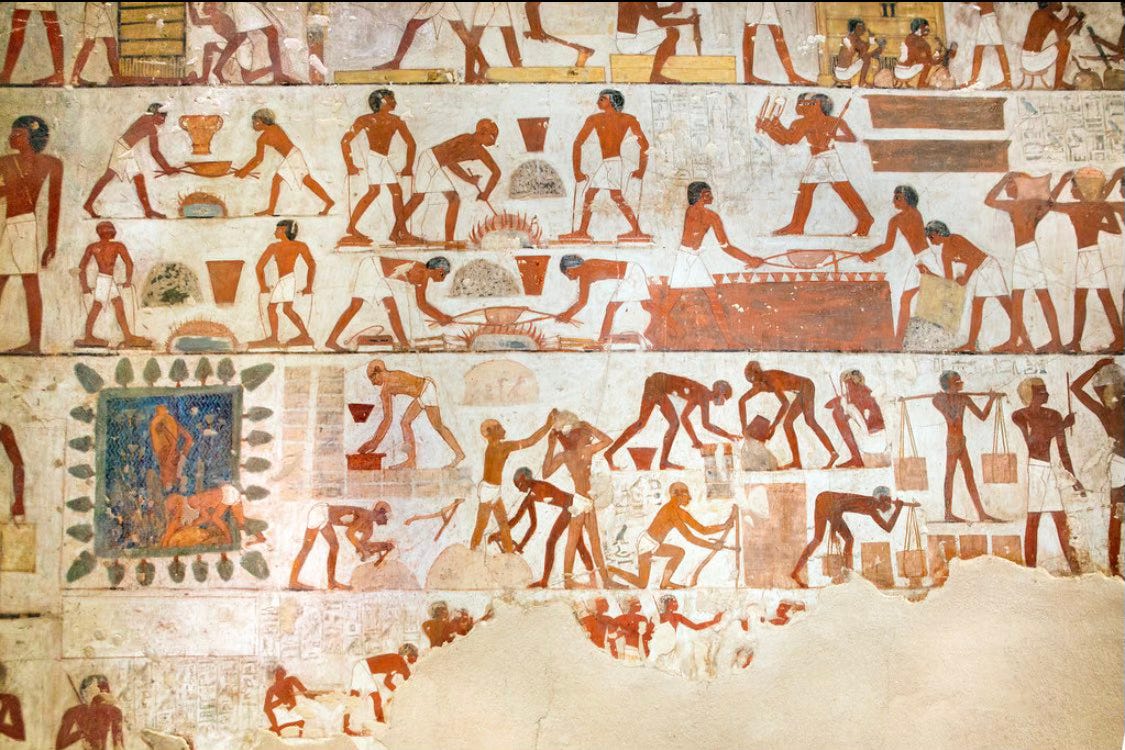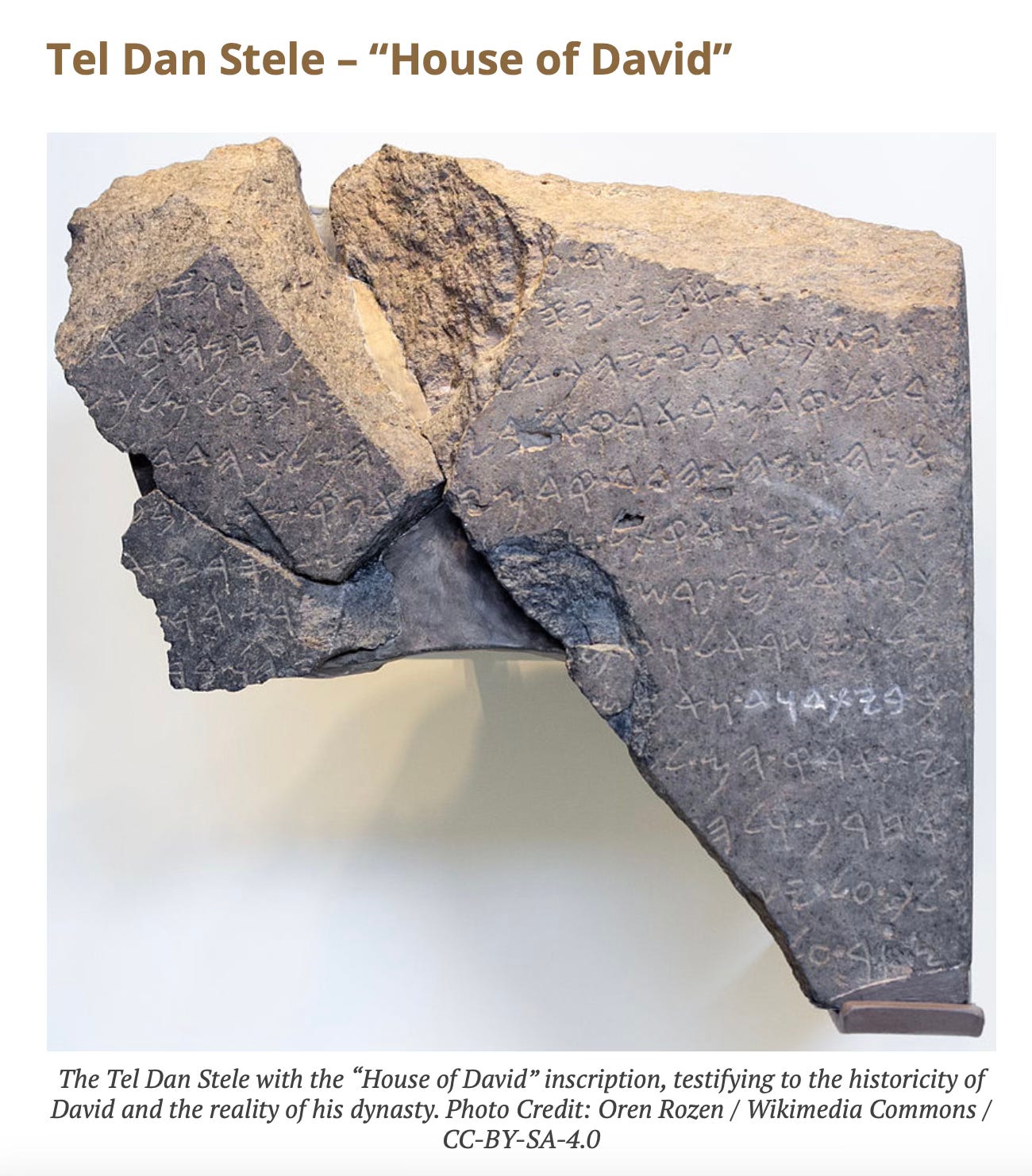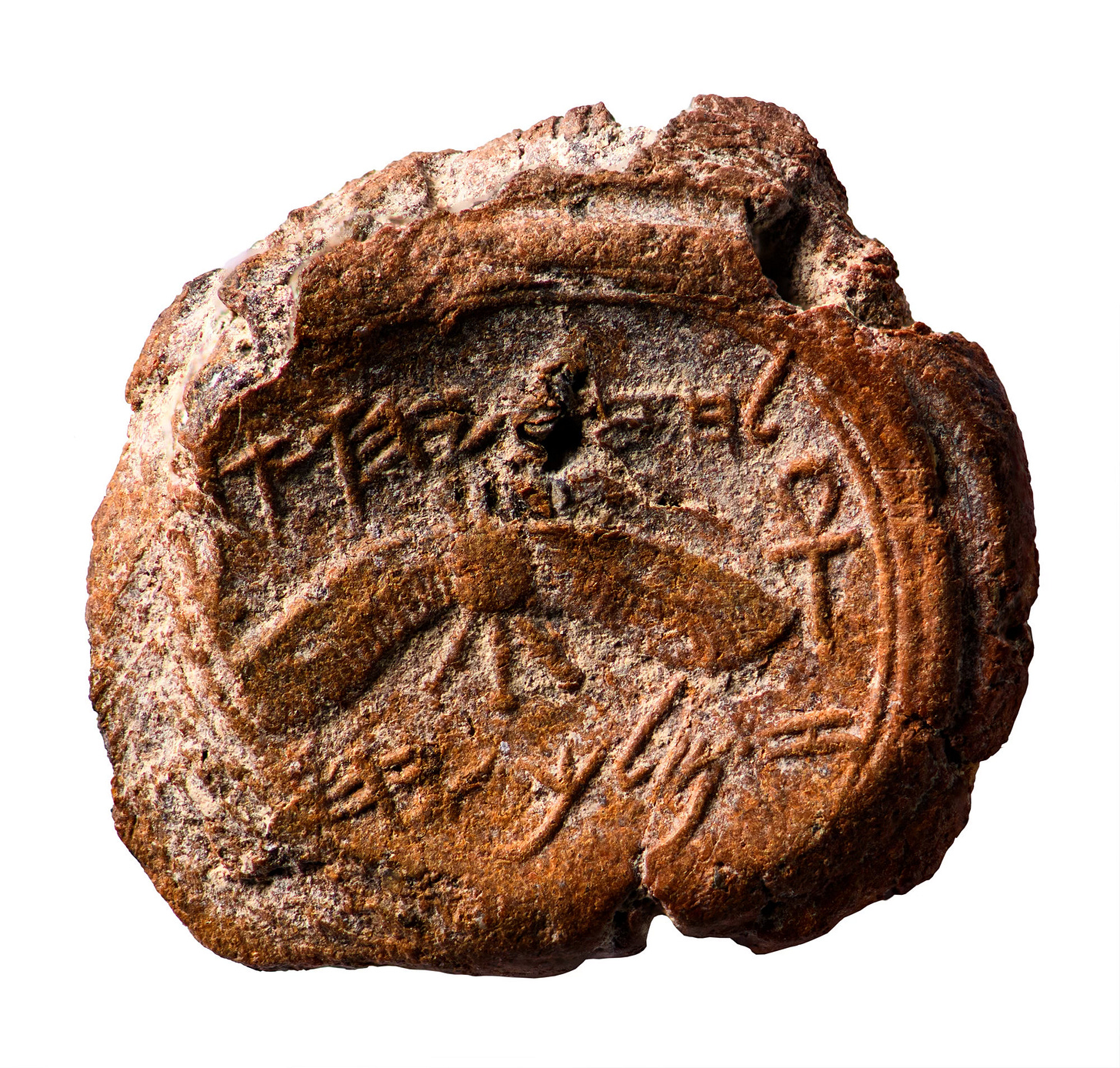In the previous post, Manuscripts Through Time, we observed how the Bible is unlike any other book in antiquity. However, the manuscript (MS/MSS) record does not necessarily demonstrate that the content or events within the MSS are factual or trustworthy. The main focus of Biblical MSS is to verify how consistent Scripture has been copied over the centuries. How, then, can one find confidence in the exact details of God’s Word? How do we know if the content is faulty, exaggerated, or reliable? Let us turn to archaeology.
“In the year that Tartan came unto Ashdod, (when Sargon the king of Assyria sent him,) and fought against Ashdod, and took it…” (Isaiah 20:1)
Critics often attack the Bible for making numerous historical errors. If skeptics can break down the facts of Scripture they can also diminish the doctrines of Scripture. However, the last two hundred years of archaeology have shown the Bible to be an accurate and trustworthy historical document. Within Biblical archaeology, there are two camps: the minimalists and the maximalists. The minimalist position contends that the bare minimum of Biblical details are correct, while the maximalists assert that the maxim of Biblical details are correct. I am a maximum maximalist.
Examples of the Bible keeping faithful records are found in the multitude of precise references made regarding ancient kings, governors, and officials. For instance, the Prophet Isaiah mentioned the name of King Sargon II, King of Assyria (Is. 20:1). However, after Sargon died his name was ‘lost’ to history, having no archaeological evidence for centuries. This led some scholars to claim Sargon was merely an alternate name for other Assyrian rulers. It was not until 1843 that Sargon’s palace, Dûr-Sharrukin (“Sargon’s Fortress”), was discovered. The palace, along with artifacts and documents, revealed Sargon’s existence and status as a powerful ruler. This is one of numerous stories showing the accuracy of the Bible standing for millennia, and even correcting the assumptions or faulty claims of scholars.
We should not pass by these types of findings too quickly. Archaeologist J. Randal Price stated that 96% of the ancient world has been lost to us. There are hundreds of thousands of ancient tablets and artifacts lying in the basements of universities and museums untouched and unstudied. The point is that when something is discovered it should not be taken lightly, it is shocking that validation for an event, person, or place can be found at all.
Dozens and possibly hundreds of Biblical archaeology books have been written, but I have provided a few recommendations below. There are so many wonderful artifacts and discoveries to write on, but here are a few of my favorites.
The Exodus
Recent scholarship is showing that the claim ‘there is no evidence for the Exodus’ to be dated and incorrect. Several major facts that define the Exodus event include Jacob’s family moving to Egypt, Joseph’s status as a leader in Egypt, the Hebrews becoming slaves, the plagues, the exit from Egypt, and God leading the Israelites towards Canaan. The astounding truth is that all of these elements can be validated in history. What does that mean? Although an Egyptian document identifying ‘Jacob son of Isaac’ has not yet been discovered, the tomb of governor Khnumhotep II (who lived close to Jacob’s time) has artwork depicting Semites (the category under which the Hebrews would fall) traveling from Canaan to Egypt. Therefore, the idea that Jacob left Canaan to live in Egypt rings true historically. There is evidence of a Semitic leader in Avaris (possibly where the Hebrews dwelled), thus, the idea of Joseph rising to a prominent position is not far-fetched. The Brooklyn Papyrus (c. 1600 BC) provides a slave list, with thirty Semitic names and specifically nine Hebrew names. This list provides verification that Hebrew slaves were in Egypt in the timeframe the Bible describes.
Furthermore, the tomb of Rekmire, a vizier who lived right at the time of Moses (c. 1450 BC), has paintings displaying Semitic slaves creating bricks and constructing buildings the same way Exodus 5 records the Hebrew slaves’ work. The Ipuwer Papyrus reports the laments of an Egyptian priest and describes mass disorder and turmoil in Egypt. Chaotic elements include the river turning to blood, pestilence over the land, great groaning, darkness over the land, and slaves leaving Egypt with gold around their necks. There is uncertainty regarding the dating of this lamentation, but there is still a parallel between this lament and the Biblical plague account.
To conclude this section, there are two inscriptions found in modern-day Sudan that bear the phrase “nomads of YHWH.” These are the oldest inscriptions bearing the name of YHWH discovered thus far (c. 1400 BC), and are part of monuments created to show a pharaoh’s victories over various peoples. The ‘nomads of YHWH’ are placed near the defeated peoples living near Canaan, thus, it is possible to conclude that these wandering shepherds, who worshipped YHWH, were close to or living in Canaan. Again, even if these are not the Hebrews, they form a parallel, revealing the Bible to be consistent with other historical findings. With all of these connections, the Exodus event is consistent with other Egyptian records and should be considered a reliable account.1
King David
David the shepherd, giant slayer, king, and ancestor of Jesus. His story is impressive, or, if you are a minimalist, unbelievable. Assertions have been made that David is merely a King Arthur figure in Jewish legends. However, the 1990s yielded the discoveries of the Tel-Dan Stele (stele=stone monument) and the Moabite Stone. Both of these artifacts mention King David and his dynasty. Furthermore, David’s palace may have been discovered, along with cities that resemble government centers dating to 1000 BC (David’s lifetime). Therefore, when you read about King David, you are not reading about a legendary chieftain, but you are reading about a kingly figure just like Cyrus or Alexander.
Kings of Judah
Many kings from Judah have been discovered on clay seals, including Uzziah, Ahaz, Jotham, Hezekiah, Manasseh, and more. Shockingly, even Jehoiachin’s ration tablet has been found in Babylon, confirming 2 Kings 25:27-30.
In conclusion, teaching that the Bible is reliable can be a wonderful witnessing tool. While doing Bible studies with an agnostic, I had to help him see that the Bible could be trusted before I could present the Gospel itself. Once he saw the Bible as historically sound, then his respect for Scripture increased and was open to the actual message of the Bible. Scripture is not simply well-preserved error. As stated previously, if we lose the historicity of God’s Word then we lose the theology revealed in those historical events. However, MSS and archaeology provide evidence to show the Bible to be truthful and dependable in both fact and doctrine.
Recommendations
Titus Kennedy’s Biblical archaeology books: These are the best books for an introduction to the topic of Biblical archaeology. Each artifact has 1-2 pages with descriptions, dates, and significance.
Geisler and Holden: Popular Handbook of Biblical Archaeology. This is for the deeper end of the pool, a heavy-hitting book that dives into the facts and technical issues of Biblical archaeology.
J Randall Price’s Biblical archaeology books: a great archaeologist and easy-to-read author.
YouTube channel: Expedition Bible. Wonderful videos and explanations of how the Bible can be historical. (https://www.youtube.com/@ExpeditionBible/videos)
Podcast: Cold-Case Christianity. Host J. Warner Wallace was a homicide detective who converted to Christianity due to the evidence and facts of the Bible. He uses investigative tools to analyze Scripture and explain Its reliability and truthfulness.
It is possible that Moses has been identified in the writings of a much later Egyptian historian, Manetho.


